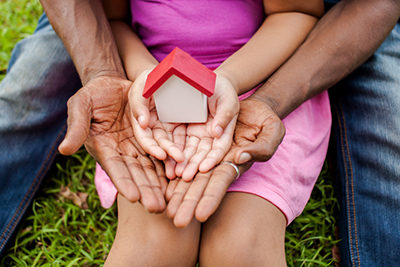Only 1 in 7 renters can afford homeownership, homelessness at an all-time high
By Charlene Crowell
Regardless of race, income, or geography, every family needs and deserves a place to call home. It’s a place not only for shelter from life’s many storms; but also, where families come after school or work, celebrate birthdays or holidays – and all the activities that together turn a house into a home. But in recent years, the ability to have a home – as a renter or as a home owner – has been an increasing financial strain.
In the worst circumstances are those who no longer have a place to call home. In 2023, a record 653,100 people experienced homelessness on a single night in January, up 70,600 people in a single year, according to The State of the Nation’s Housing 2024, an annual report just published by Harvard’s Joint Center on Housing Studies (JCHS). This figure includes an additional 22,800 people living outside or staying in places not intended for human habitation, pushing the unsheltered population to an all-time high.
The report also documents that of the 22.4 million renters who pay over 30 percent of household income for housing, 12.1 million of these consumers pay more than half of their income on housing and utilities. And nationwide, renters with the lowest incomes have just $310 left over each month to cover all their non-housing needs.
“Rents have been rising faster than incomes for decades,” says Alexander Hermann, a Senior Research Associate at the Center. “However, the pandemic-era rent surge produced an unprecedented affordability crisis that continues.”
More than half of Black (57 percent), Latino (54 percent), and multiracial (50 percent) renter households remain cost-burdened since 2022. As a rule, affordable housing should cost no more than 30 percent of household income.
Renters seeking to transition to homeownership face daunting financial challenges as well.
“Whether it’s the high downpayment or the monthly mortgage payments, the costs of buying a home have left homeownership out of reach to all but the most advantaged households,” says Daniel McCue, a JCHS Senior Research Associate.
According to the report, a consumer purchasing a home with an affordable FHA loan that requires only a 3.5 percent down payment would incur a a monthly payment of $3096, and an annual income of at least $119,800, only one in seven (6.6 million) of the nation’s 45 million renters can qualify for that mortgage payment.
“In the event a buyer could not qualify for a low-downpayment loan, the required cash would be $89,600 for a 20 percent downpayment and 3 percent closing costs on the same property. Assuming the buyer earns the national median household income of $74,800, they would need to save more than a full year’s salary to amass sufficient cash,” states the report.
Beyond the nation’s 47 percent jump in housing costs since 2020, households of color now have additional hurdles to overcome before achieving their own American Dream.
For example, increasing costs and numbers of climate disasters have led to corresponding increases in home insurance costs. In 2023, the number of billion-dollar disasters reached a record 28, affecting 60.5 million housing units.
In reaction, and according to Forbes, the average annual cost for insurance on a house valued at $350,000 is $1,678. However, insurance costs in Alabama, Florida, Kansas, and Mississippi average more than $2,000 per year. Residents in Arkansas, Louisiana, and Oklahoma pay more than $3,000 yearly.
Further, historic racial wealth disparities contribute to the nation’s large racial homeownership gap, Intergenerational transfers of wealth that often help whites with downpayments and/or mortgage financing remain an exception rather than the rule for many Blacks, according to JCHS. And access to affordable credit remains a nagging deterrent to homeownership.
“Addressing these challenges will not be easy,” says Chris Herbert, Managing Director of the Center. “But with concerted efforts by policymakers at all levels of government, together with the private and nonprofit sectors, we have the ability to increase the supply of quality, affordable homes in thriving communities across the US.”

